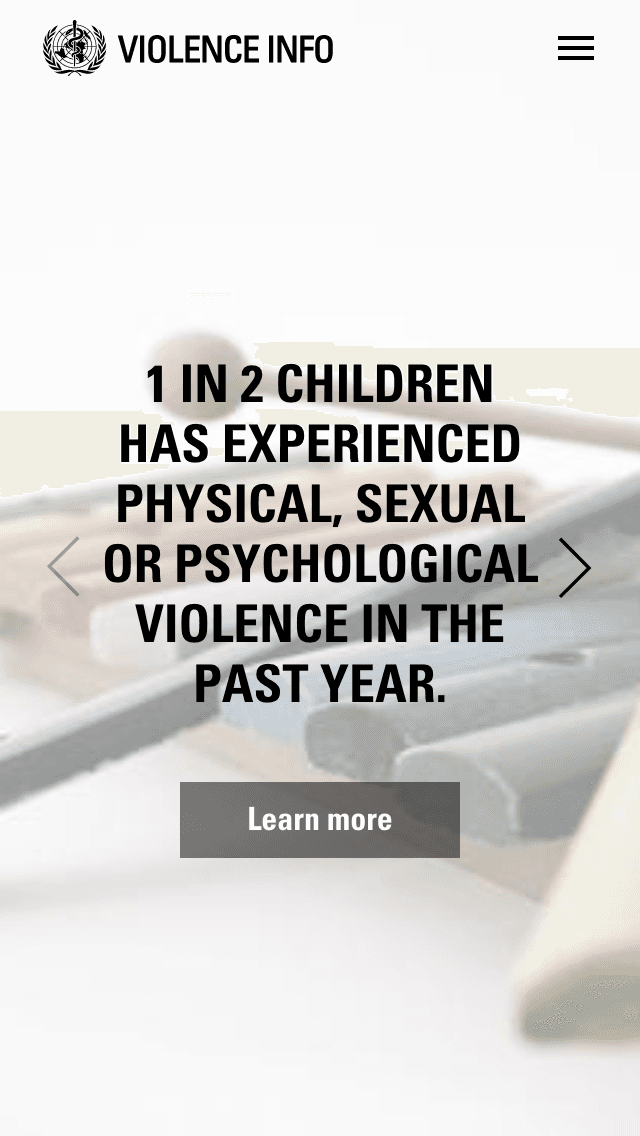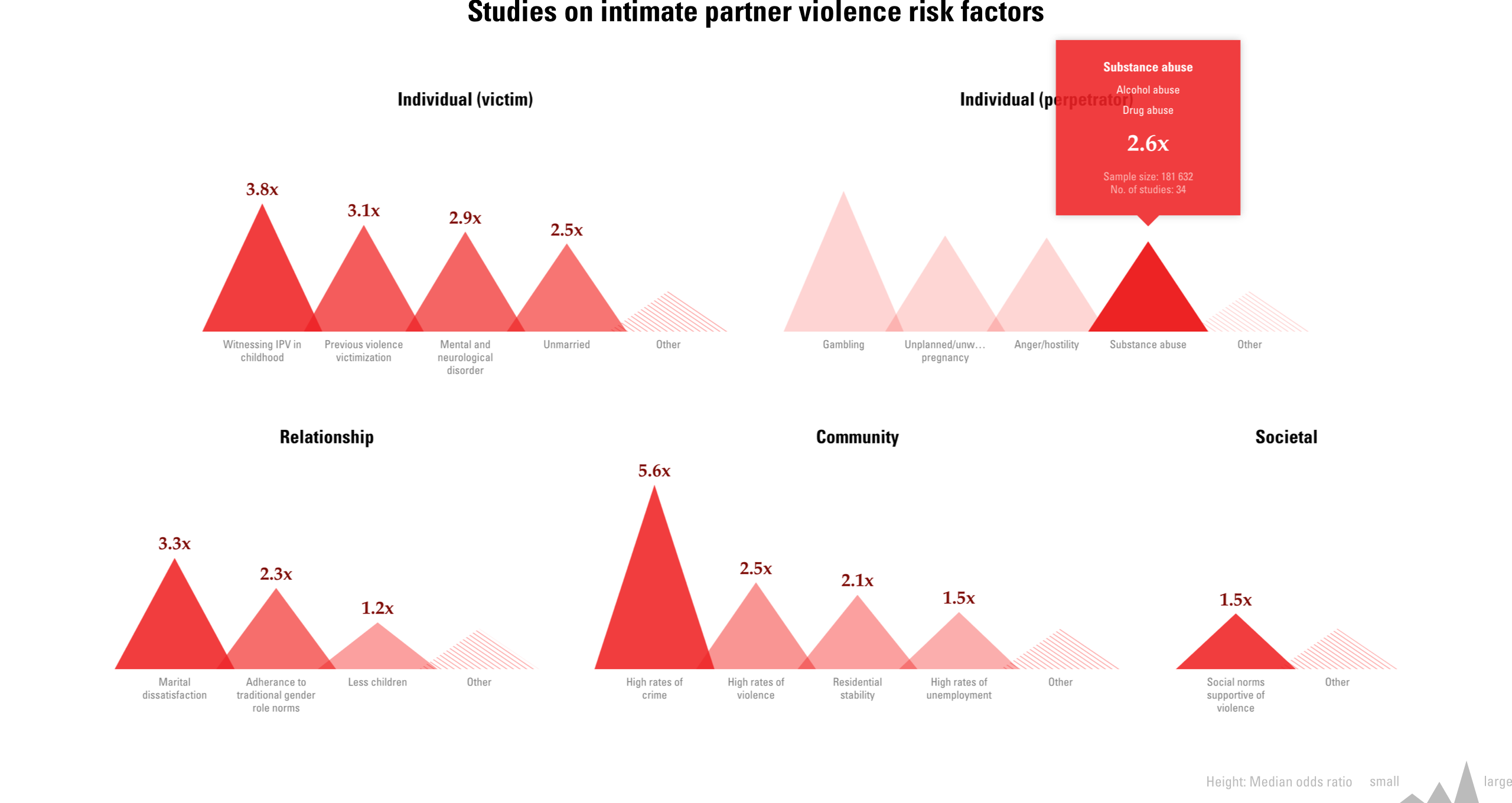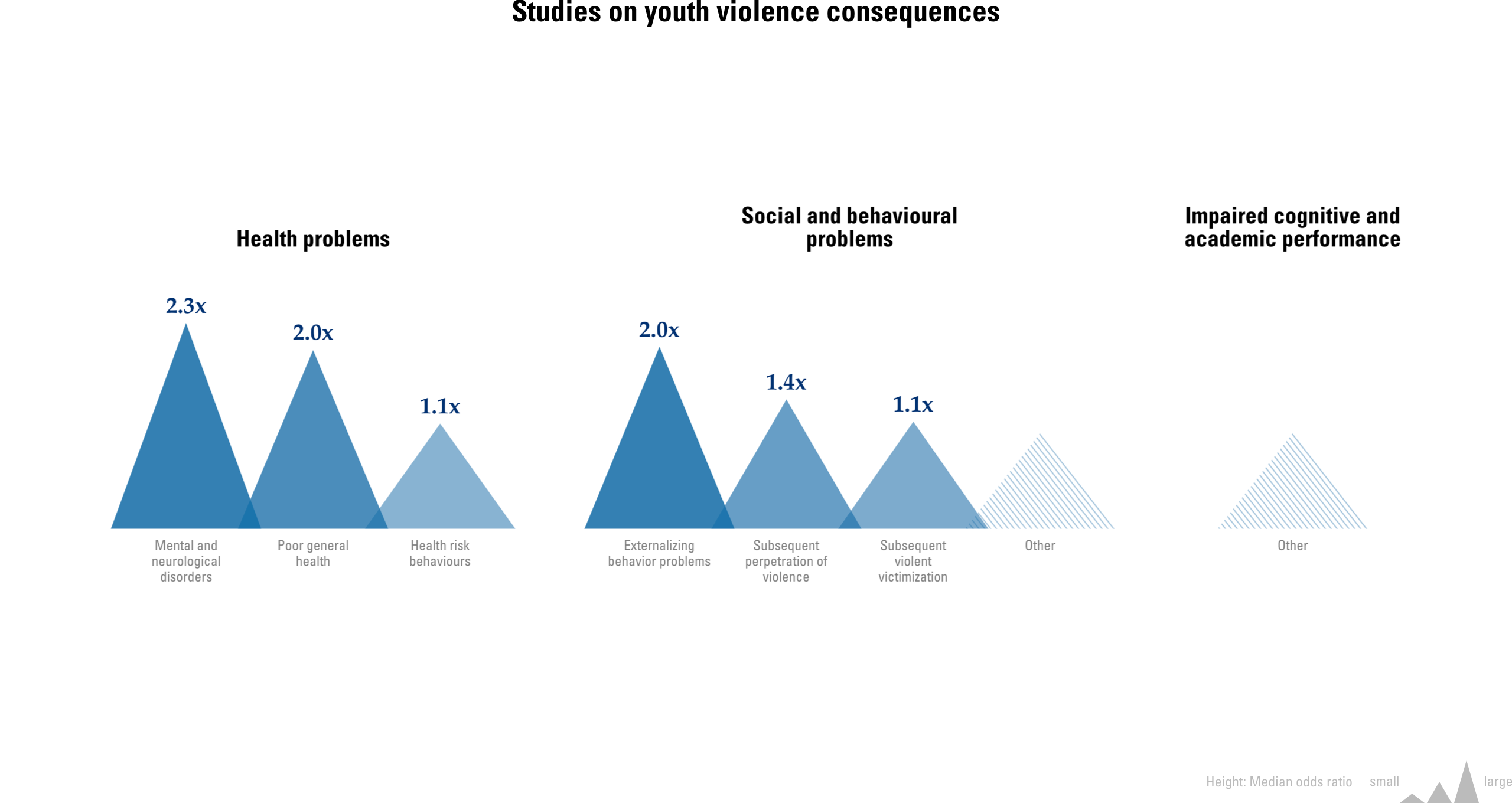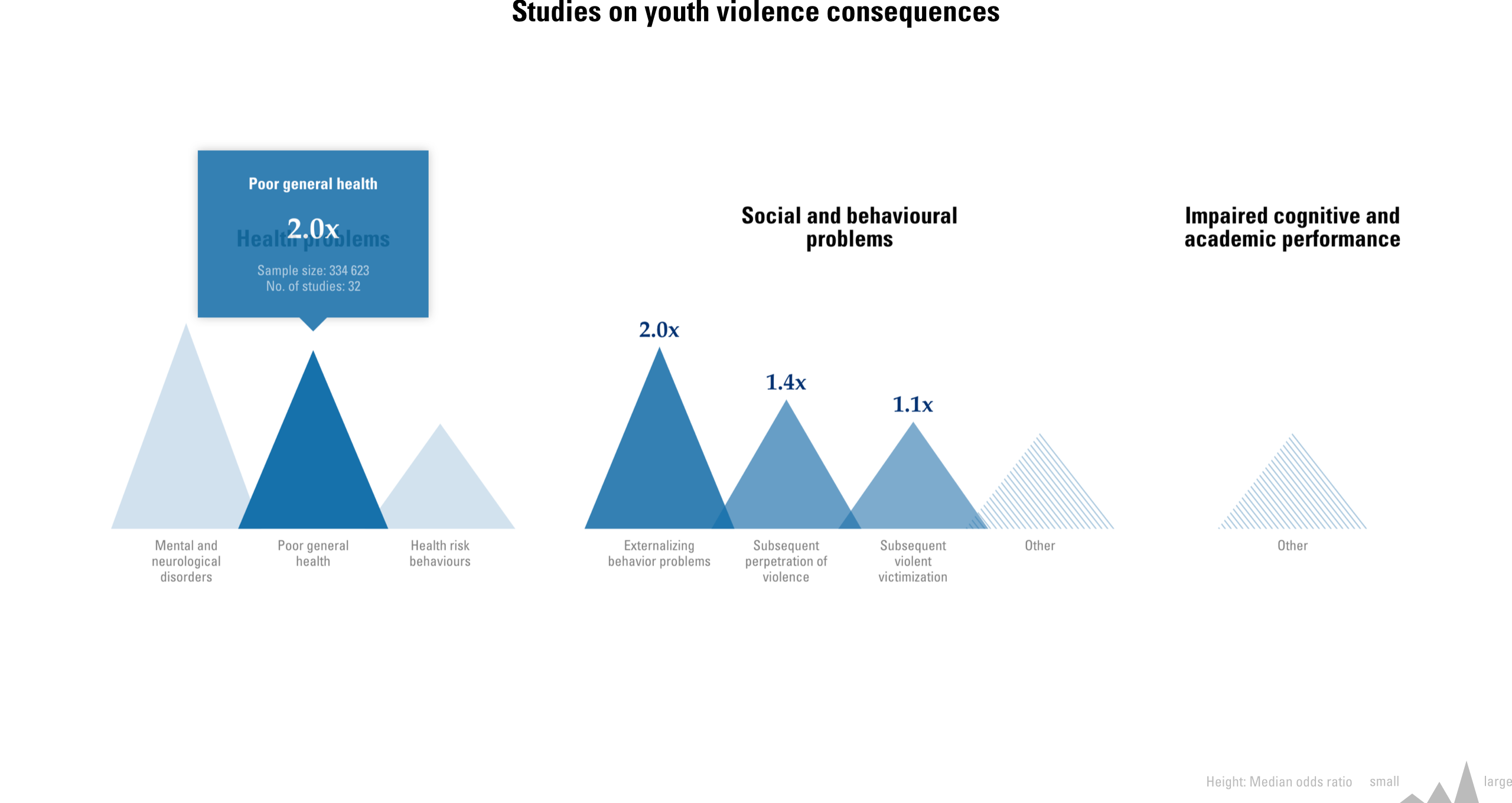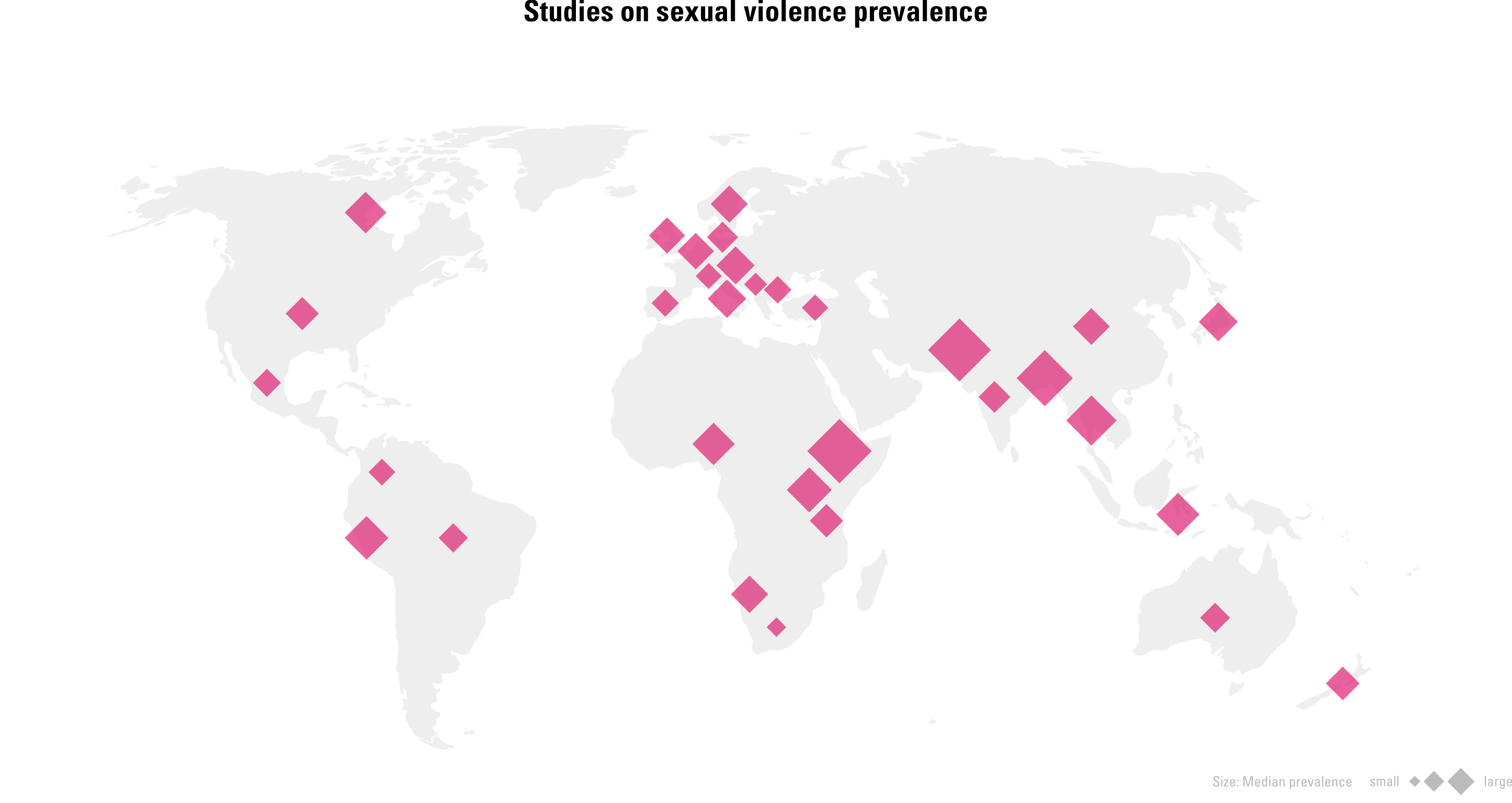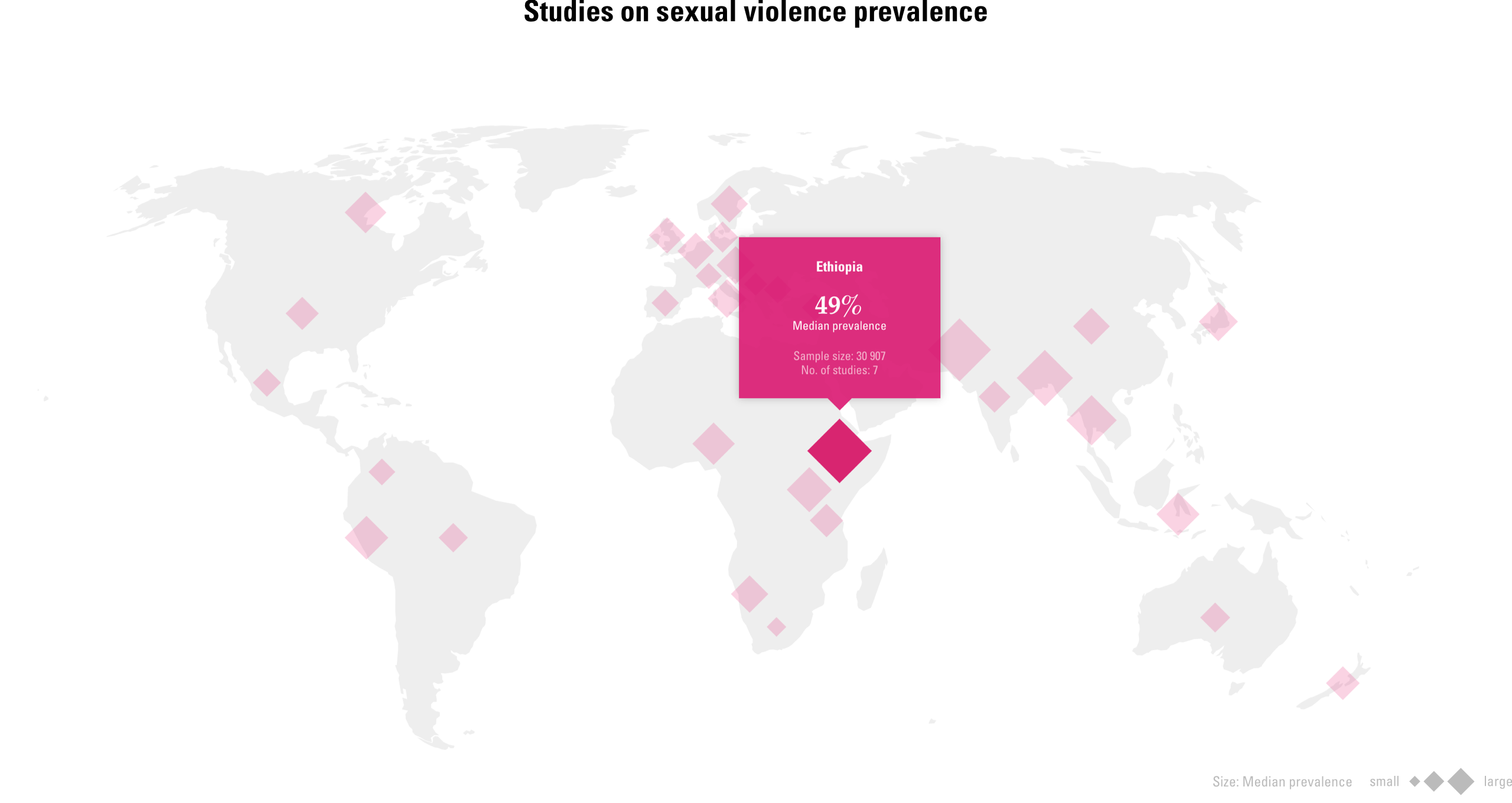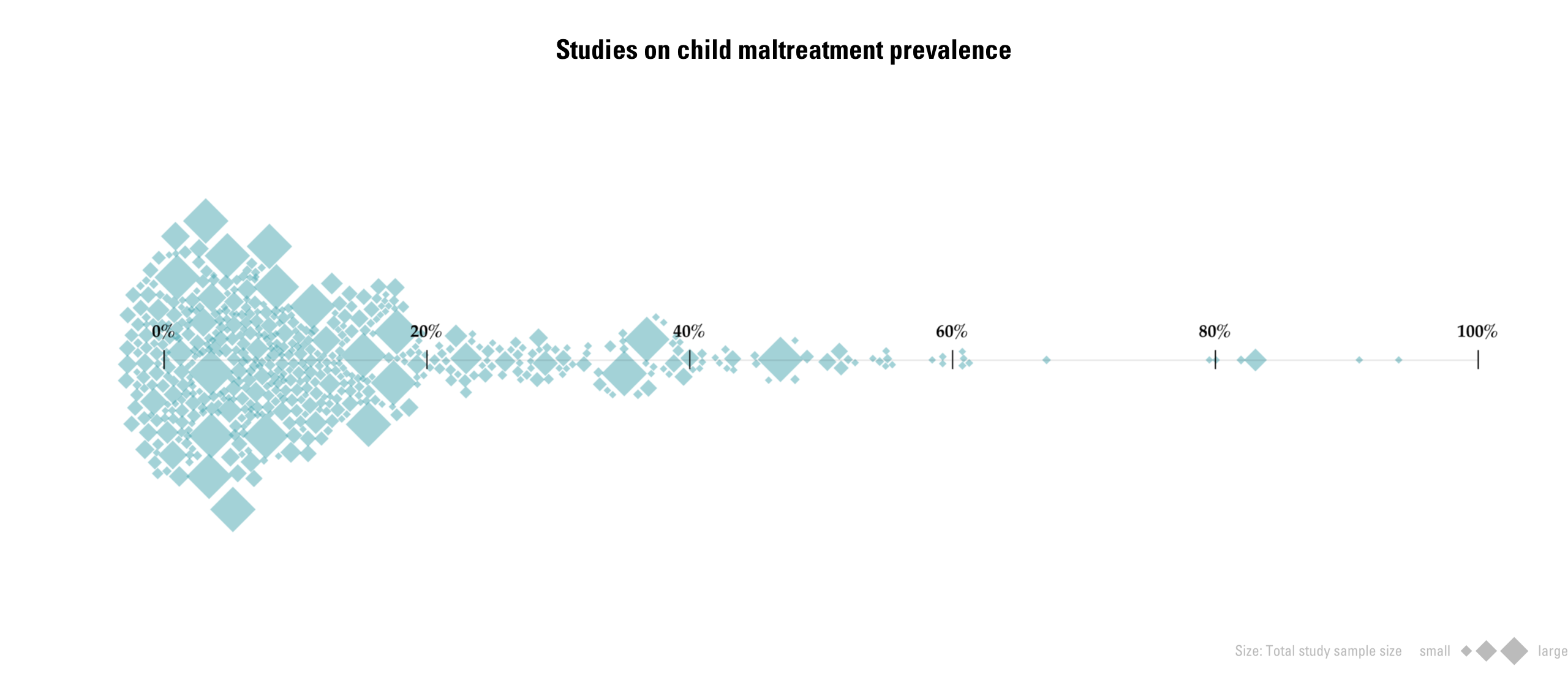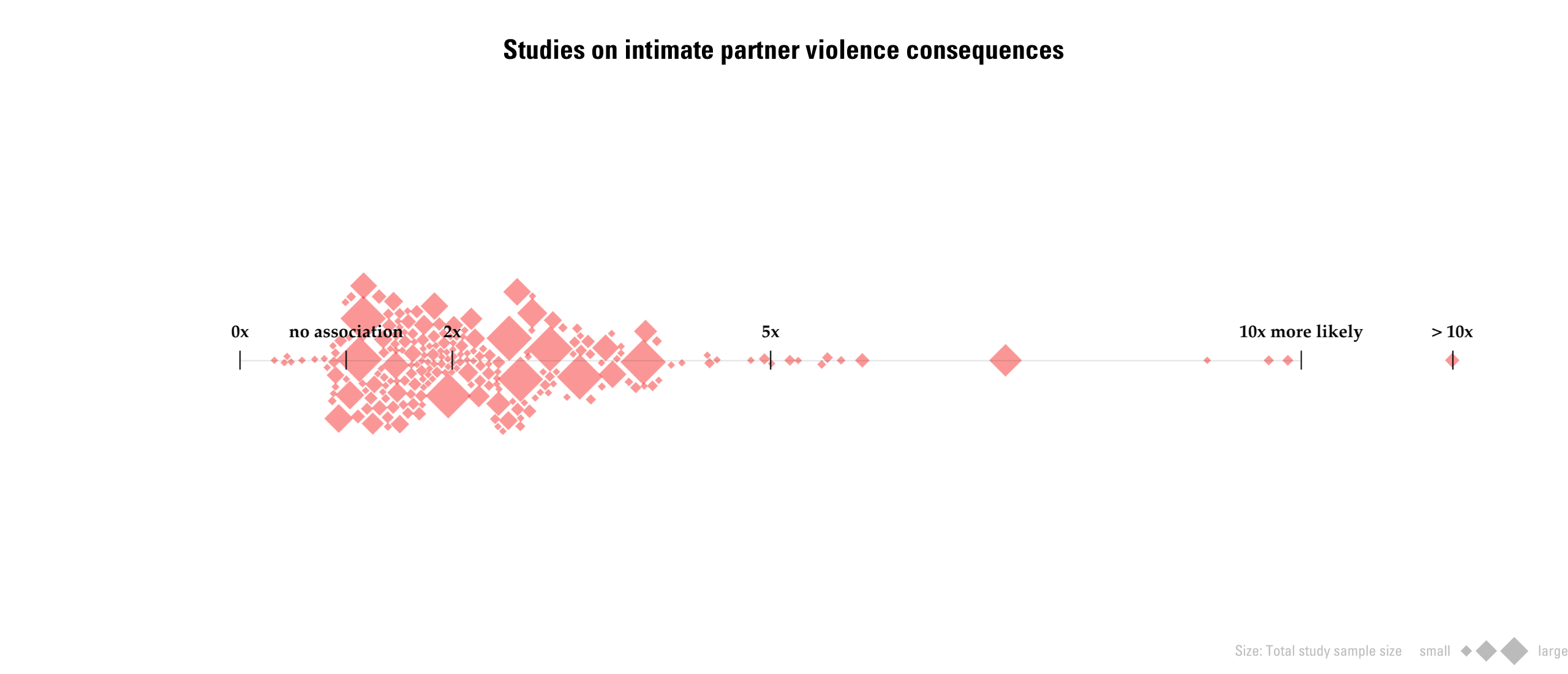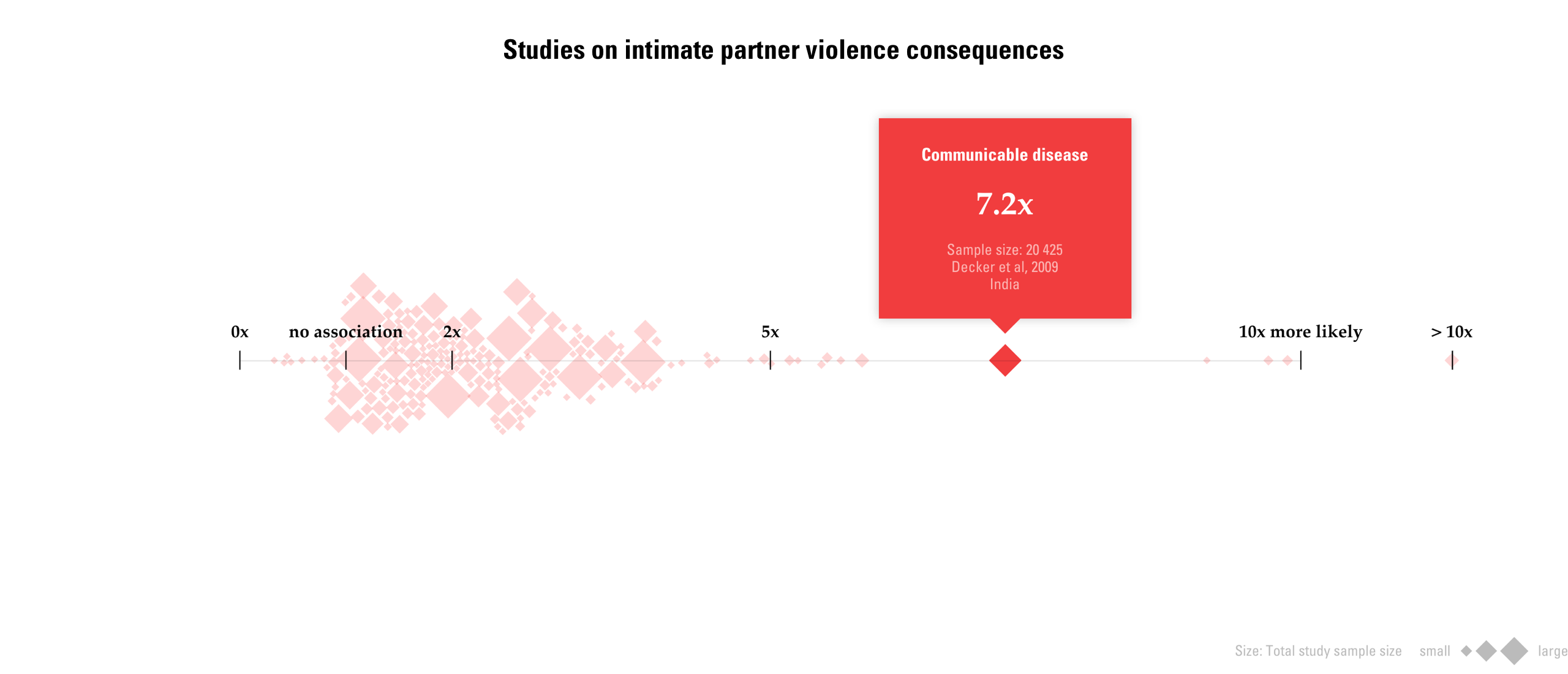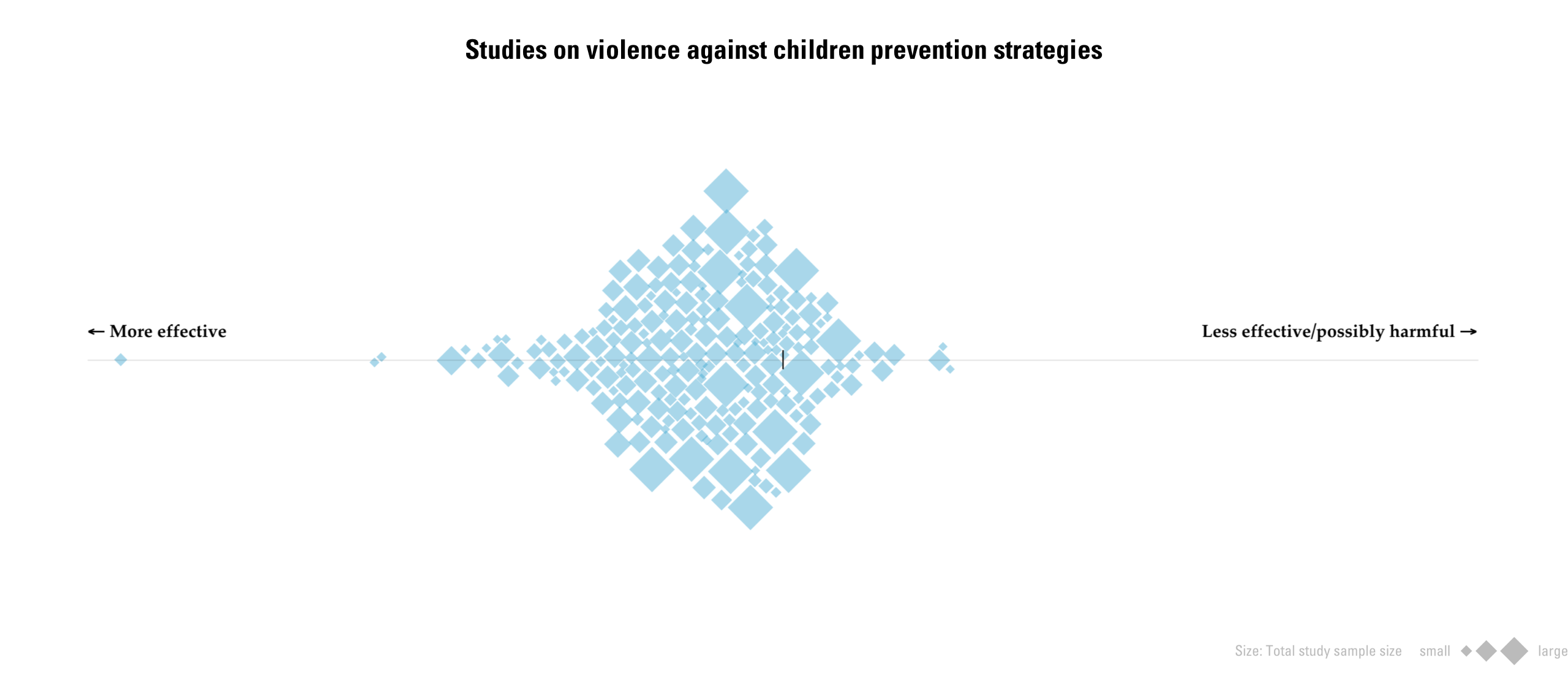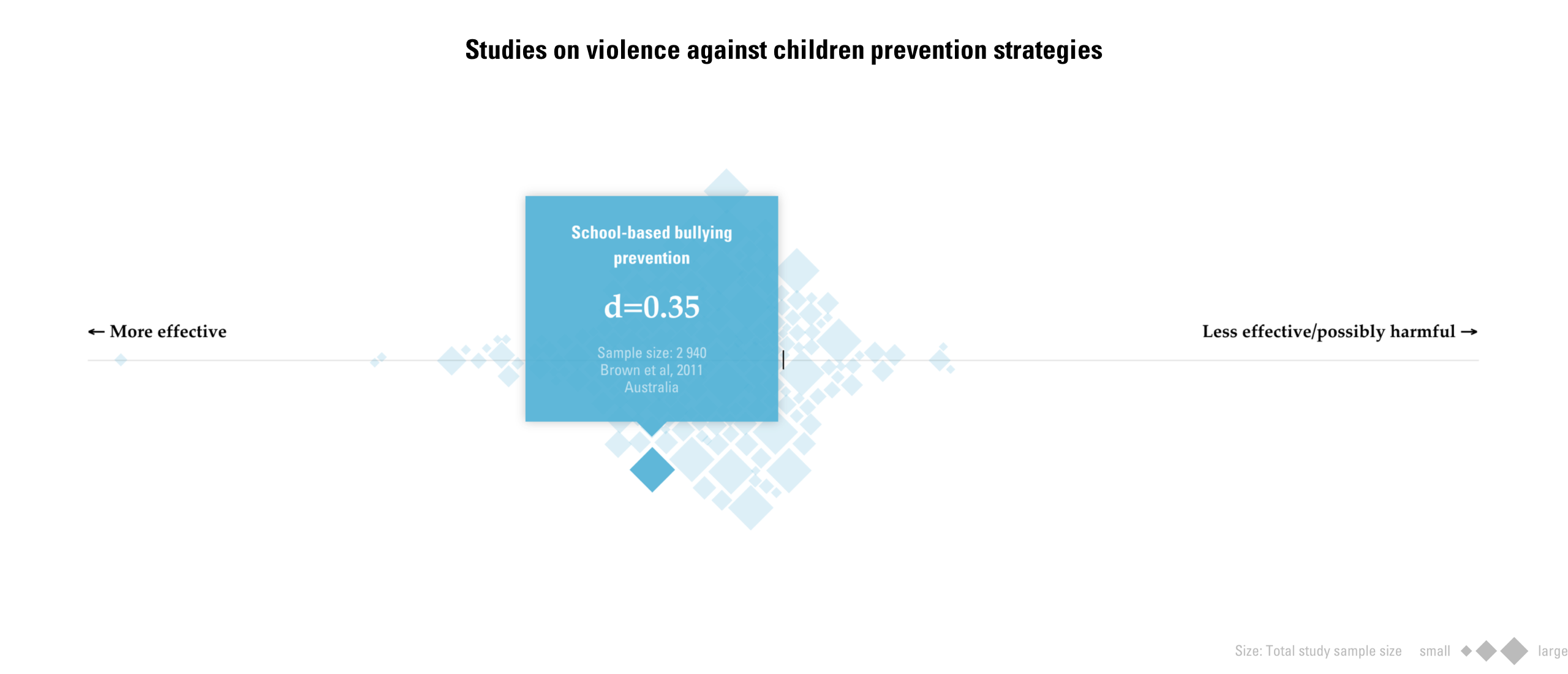WHO
Violence Info
Global knowledge platform about violence prevention for the World Health Organization
Violence Info is a collection of current, published scientific information on interpersonal violence. It provides information on the prevalence of violence, its consequences, risk factors, prevention and response strategies. The data for each category of violence is analyzable through various visualizations to present a more accurate picture of the magnitude, severity, and consequences for individuals and society.
Introducing the different types of violence
For each of the violence types we created a dedicated page to summarize the most important facts and figures. It is structured to first give a solid definition and explanation of a violence type’s prevalence. The experience then continues into the potential consequences and risk factors for an individual and our greater society. Each category is concluded with a list of possible prevention and response strategies based on the findings of multiple studies within the database.

Communicating complex violence data to a broad audience
The main challenge we faced in this project was to communicate the statistically very complex data to a broad audience in an accessible way. Our solution is a set of simple data visualizations summarizing the findings of all the studies in the data base.
Reporting a country’s actions to prevent violence
Violence Info also covers country specific information on their action plans, laws and programs created to prevent violence. Further, it indicates their reported homicide rate and available studies on other types of violence.

Providing an expert tool for scientists and journalists
For scientists and journalists we built a tool which allows them to explore the over 3,000 studies within the Violence Info platform. The studies are organized first by violence type and then by its prevalence, consequences, risk factors, prevention and response strategies. The full set can be filtered by author, sex, age or income group and other parameters.
Details
| Sector | Non-Profit |
| Product | Data Platform |
| Impact | Progress & Equity |
| Release | October 2017 |
Services
- Interaction Design
- Interface Design
- Data Visualization
- Software Engineering
- Content Management
Credits
- Christian Siegrist
- Ece Kavlak
- Gerhard Bliedung
- Luc Guillemot
- Peter Gassner
- Tomas Carnecky
- Liverpool John Moores University (Data Acquisition)
- Alex Serafini Swanepoel (Photography)
Interested in working with us?

